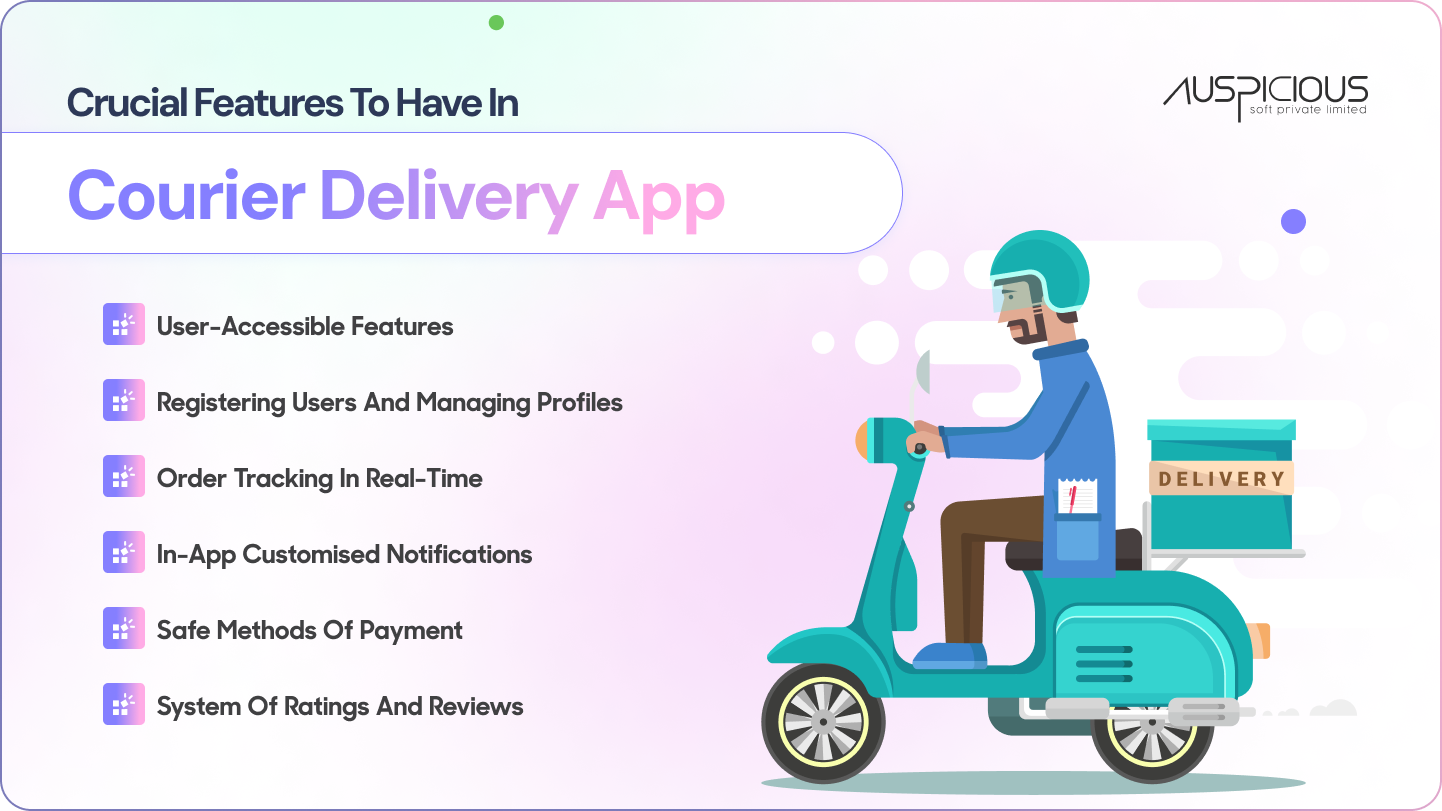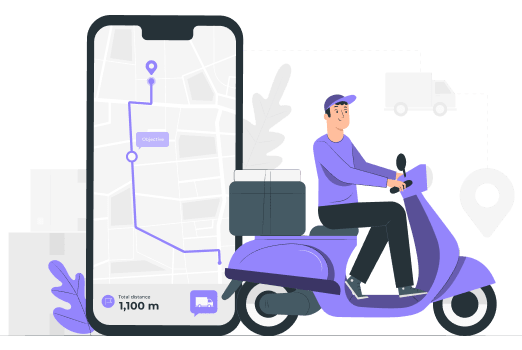How to Build a Courier Delivery App: Development, Market & Trends
The delivery industry is not exempt from the global trend of digitalisation in many businesses. Courier Delivery App Development Company has completely changed supply chains and related industries. By removing middlemen, these apps have increased shippers’ transparency and made the supply chain process more dependable.
You are at the perfect place if you want to learn more about the ins and outs of developing on-demand courier apps! An introduction to the logistics industry, the features and advantages of delivering on-demand mobile application development companies, and the variables influencing the price of creating such apps are all covered in this article.
In order to examine the advantages of developing a courier delivery app, let’s take a moment to reflect on the present situation of the demand-based delivery solutions and app industry.
Market Share & Trends
Since transportation and logistics data tell a powerful story, let’s speak about numbers. Apps for courier delivery have grown significantly in the last several years. By 2030, the worldwide digital logistics industry, which was valued at USD 18.10B by 2021, is predicted to have grown to USD 77.52 billion.
The e-commerce industry’s explosive growth, which is expected to reach an astounding worth of $36 trillion before 2030, is a major driver of this expansion. The expansion of the gig economy, the increasing acceptance of online shopping, and the demand for contactless shipping alternatives during the COVID-19 epidemic are some of the causes contributing to this increase.
As a result, the demand for Courier Delivery App development companies has increased in tandem with these consumers’ preference for online shopping. Strategic Market Research, however, asserts that those solutions need to satisfy client demands in crucial areas, including inventory control, last-mile delivery, and order fulfilment.
The market for digital delivery and mobile application development companies is being driven by the expansion of the e-commerce sector in order to optimise delivery systems and boost the operational margins of e-commerce businesses. Businesses may enhance supply chain operations, boost visibility, and easily satisfy the expanding expectations of the booming e-commerce industry by utilising digital logistics solutions.
Furthermore, the worldwide parcels market is estimated to be worth $349.89 billion, or almost 6% of the worldwide shipping industry. These figures show a bright future for instant delivery app development, indicating a sizable market and favourable circumstances for software development firms looking to enter this space.
Crucial Features in The App to Expect from Courier Delivery App Development Company
Integrating elements that improve user experience (UX) is essential. You must optimise when creating the app by keeping user-accessible features.

• User-accessible features
The primary interface of a courier’s delivery app begins with the functionality that the user already possesses. This covers everything from profile management and user registration to payment methods and review ratings.
• Registering Users and Managing Profiles
For the food delivery and courier service apps to be developed, a seamless user registration procedure is essential. Apps with simple sign-up procedures can boost user engagement by as much as 2x more. Permit individuals to sign up using their social network accounts or email addresses. This keeps people engaged and streamlines onboarding.
• Order tracking in real-time
Live tracking applications are preferred by most consumers. It is because they allow them to follow their deliveries with peace of mind. For this reason, precise position monitoring is made possible by GPS integration. Users’ pleasure is increased by providing them with projected delivery timings.
• In-App Customised Notifications
Users are continually informed thanks to in-app alerts. Providing prompt order status notifications always increases user confidence. According to research, applications that offer tailored alerts increase user engagement by 60%.
• Safe Methods of Payment
The worldwide market for digital payments is projected to reach a value of over $10 trillion by 2025. Therefore, a variety of payment methods, including cash on delivery, wallets, and credit cards, will be made available based on customer desire. Safety is improved by the encryption used during a transaction.
• System of Ratings and Reviews
A robust system of ratings and reviews is essential for ensuring quality. 86% of customers, according to research, check reviews before selecting a service. More direct input may be provided thanks to this function, which helps service providers pinpoint their areas for development.
Let’s Explore Delivery agent-favouring features
• Driver Onboarding and Registration
Driver turnover may be lowered by up to 50% with an effective onboarding procedure. More drivers will use the food-delivery app as a result of this simplicity. Notably, businesses with strong onboarding initiatives typically observe higher driver satisfaction and retention rates.
• Assignment of Orders and Dispatch
When developing apps for a mobile application development company, effective order assignment mechanisms are essential. Automated dispatching systems can cut delivery times by 20–30%, according to research. Consequently, this increased efficiency raises driver productivity in addition to customer happiness.
• Route optimisation and navigation
Delivery applications with built-in navigation features are a major source of efficiency. Drivers may save commute times by up to 25% with real-time traffic data. Consequently, delivery times are accelerated, and overall customer satisfaction is raised.
• Tracking Order Pickup or Delivery
Operational transparency is significantly increased by efficient delivery and pickup tracking systems. Drivers are more productive when they have access to comprehensive delivery updates because they are less concerned about the status of their orders. This feature promotes a more favourable work experience when combined with an intuitive user interface (UI).
• Organising and Compiling Needs
Establish your distinct value offer first. Choose between a subscription-based or commission-based business strategy. Your bespoke mobile app creation process will be shaped by this foundation, which is essential for courier app development.
How to create your courier Delivery App?
• Selecting the Appropriate Development Method
Select between cross-platform, hybrid, or native development. The platforms that your audience prefers, such as iOS or Android, will determine this choice. Cross-platform technologies like Flutter may reduce the delivery service time.
• Putting Development Phases First
Create a smooth user interface (UI) for your program by developing its front end. Make sure the user interface (UX) is seamless while building the back-end for robust functioning.
• Assurance of Quality and Testing
Verify usability and functionality to ensure on-demand delivery meets expectations. Make sure there are no problems affecting the app’s functionality.
• Launch and Deployment
Make your app store listings as user-friendly as possible. After that, the software may be successfully released on the Apple Software Store and Google Play.
Which Technology Stack Is Used to Develop Apps for Courier Delivery?
Businesses want to develop strong courier delivery applications by hiring mobile application Development Company. This is in order to satisfy the increasing demands of customers who are beginning to choose doorstep deliveries. An outline of the key technologies that are supporting the development of courier delivery apps can be found here.
• Mobile Frameworks: Android and iOS
Flutter and React Native are the two most widely utilised technologies for developing cross-platform mobile apps. By guaranteeing a consistent user experience across platforms, these frameworks allow developers to provide write-once-deploy-everywhere functionality on both iOS and Android with little resources, cutting down on development time.
Web technologies: Angular or Vue. Js-based aesthetically pleasing yet accountable user interfaces are built using JavaScript, HTML, and CSS frameworks. The technologies facilitate quick loading, fluid interaction, and easy navigation inside an application with the aid of an intuitive user interface.
• Languages for Server-Side Programming
Python and Node.js are two well-known backend technologies utilised in courier delivery applications. Building quick and efficient server-side applications that can handle user requests, process data, and carry out business logic is possible with both languages.
Server infrastructure and APIs: RESTful APIs facilitate smooth communication between the application and both backend and frontend services. Furthermore, a strong server architecture guarantees the app’s performance even when it handles high traffic volumes.
• Solutions for Databases and Hosting
Cloud databases like Firebase or AWS would be the most effective way to handle the volumes of data produced while utilising the courier service application. These solutions by Courier Delivery App development company are scalable, dependable, and adaptable enough to ensure expansion without causing your application to experience even a single outage or loss of data.
Final takeaways
The foundation of every courier and package delivery business is its applications. However, developing a courier application involves a lot of work, technological expertise, and other considerations. Creating software for courier delivery will drastically cut down on interpersonal communication and logistical disputes. If you are planning to build a courier delivery app, this article has outlined the most crucial details needed to develop an app.
TABLE OF CONTENT
- How to Build a Courier Delivery App: Development, Market & Trends
- Market Share & Trends
- Crucial Features in The App to Expect from Courier Delivery App Development Company
- Let’s Explore Delivery agent-favouring features
- How to create your courier Delivery App?
- Which Technology Stack Is Used to Develop Apps for Courier Delivery?
- Final takeaways
